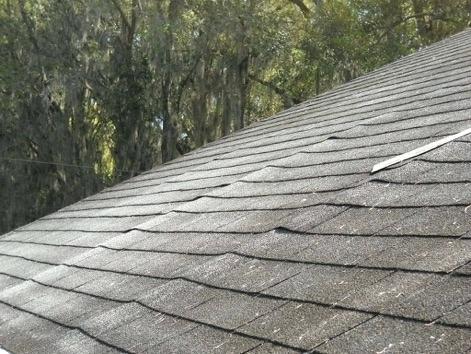When it’s time to compare roof materials to choose for your own home, there’s more to consider than meets the eye.
Asphalt shingles and tile roofs are very popular options. They both have advantages and disadvantages, but there’s more to such home improvement projects than putting two rivals into the ring.
The reaction of roofing materials to the elements, the temperatures, and all the natural phenomena is not the same. That’s to be expected with roofs made of different materials. But then again, there are some other factors you need to consider or even talk with your roof contractor about before you jump to conclusions.
 What to know about roofs before start comparing materials
What to know about roofs before start comparing materials
For example, not all roof materials weigh the same. And then again, the load of the roof will depend on its size and the slope (which will also affect the size, the material/square). And such things that have to do with the weight relate to the structure’s frame. Will the house frame hold the weight of the roof material?
Different materials react differently to the winds, the heat, the natural disasters. Some are more durable than others. Some require more maintenance than others. Some cost more than others. And so, at the end of the day, it all has to do with your house – and whether this is a new construction or a project than involves a roof replacement, your expectations, the climate at your location, the building codes, your budget.
With that said, it’s time to throw our two rivals in the ring.
 Tile Roofs
Tile Roofs
Not all roof tiles are the same. While they are all tiles, they are made of different materials and so, they don’t look alike. Their appearance is as different as their durability, cost, and longevity.
Which are the main materials of tile roofs?
Concrete: this is a solid material since it consists of sand mixture, water, and cement and thus, is heavy. Such ingredients are mixed well together – while undergoing a baking process, and the final product is extremely durable. So, heavy but extra strong.
Clay: this material is considered the traditional one used for the manufacture of tiles. Nowadays, clay is treated to be extra resistant to water. Due to their light color, they don’t absorb much heat.
Fiber cement: although not a very popular choice, such tiles are made of the mixture of wood, clay and concrete. Their advantage is that the end result is extremely durable without being very heavy.
Terracotta: the way terracotta is baked and treated makes it extra strong and not porous – the perfect combination for homes & locations where resistance to the elements is fundamental. Another perk here is their shape. They either have a barrel or S shape and thus, not only do you have appearance options but also the benefit of a roof which allows rainwater to shed with ease.
The main benefits of tile roofs?
• 50+ years of life expectancy
• Very durable and so, long lasting
• Resistant to water, insects, fire
• Great appearance, many styles & colors
The disadvantages of tile roofs?
• Expensive
• Not tolerant to roof traffic
• Heavy
• Not for locations with climate fluctuations
 Asphalt Shingles
Asphalt Shingles
Shingles are made of fiberglass and then topped with asphalt and then topped with ceramic granules. Here you don’t have the variations you have with roof tiles, but only to consider the qualities. There are poor and good quality asphalt shingles. As for their appearance, there are the architectural or layered shingles, which kind of resemble wooden shakes, and there are also laminated or flat shingles that are thinner than the layered ones and inferior in terms of quality.
The main benefits of asphalt shingles?
• Inexpensive
• Lightweight
• Many styles and colors
• May last up to 30 years
The disadvantages of asphalt shingles?
• Poor quality shingles last up to 12 years
• Prone to cracking
• Not environmentally friendly (asphalt contains petroleum)
• Need maintenance
Conclusions
Asphalt shingles don’t even begin to compare with tile roofs price-wise. They are much cheaper – even the more expensive quality. Though, they lack the durability of tiles but have the advantage of the light weight that won’t put any strain on the structure’s frame and integrity. Tiles, on the other hand, may be strong but not ideal for stormy climates since they cannot tolerate impact. Tiles may also snap in wet weather and are ideal for dry and warm climates. Both roof materials are beautiful and so, one thing to cross off the long list of considerations.


